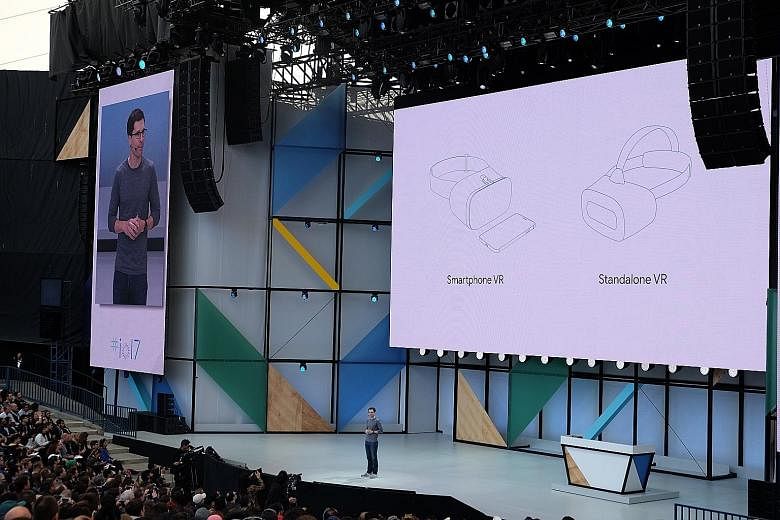Later this year, consumers will be able to step into a virtual reality (VR) world without the hassle of connecting headsets to phones or external computers.
Google is rolling out a standalone VR headset with integrated augmented reality (AR) capabilities. It has all the necessary hardware for computing and rendering VR in the device itself.
A user would just have to strap on the headset, turn it on, and immediately be in a VR setting without having to deal with cables or an external phone, said the tech company during the Google I/O 2017 developer conference keynote last Wednesday.
This is a step up from Google's current Daydream VR headset, which requires a compatible Android phone. Daydream is Google's own VR platform, comprising VR software and a fabric-based headset.
As the existing Daydream headset is unavailable in Singapore, it is unclear if the new standalone one will hit local shores when it is released.
Doing away with external devices will help the standalone headset stand out from current players in the VR space, which include devices such as the Oculus Rift, HTC Vive, Samsung Gear VR and Sony PlayStation VR that require additional devices on top of the headset.
The standalone headset will run an updated version of the Android-based Daydream platform, which will support Web browser surfing.
The headset will be able to map the user's physical surroundings using a headset tracking technology Google calls "Worldsense", which is powered by the company's augmented-reality software, Tango.
It features wide-angle camera tracking and depth perception, which will let users hide behind furniture and have virtual objects bounce off it, for example.
Chip company Qualcomm has drawn up a reference design for the standalone headset which manufacturers will use to make the product.
Google is working with two companies to manufacture the headset: Taiwanese firm HTC, which already has plenty of experience with VR due to its own Vive headsets, and Chinese company Lenovo, which Google has collaborated with on the first Tango-enabled phone, the Lenovo Phab 2 Pro.


